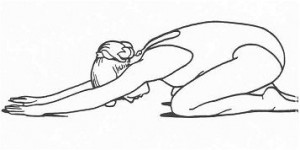Even in dry, semi-arid, montane Calgary, spring is kapha season. In ayurveda, sister science to yoga, kapha is characterized by cold and damp. And it is this dosha, kapha, that is associated with sinus issues gaining a foothold. This will be especially true for individuals who have a kapha prakriti, or constitution.
 Lifestyle adjustments can do much to alleviate excess kapha, and prevent or alleviate sinus pressure:
Lifestyle adjustments can do much to alleviate excess kapha, and prevent or alleviate sinus pressure:
- Minimize foods that are very hot or icy cold, either in temperature or taste; some examples are chili peppers or ice-cold foods and drinks. Choose cooked, warm meals that are light, nurturing, and easy to digest. Kitchari is a delicious, suitable dish. Or, saute’ the following spices in clarified butter and sprinkle on vegetables, grains, or incorporate into soups and stews.
- turmeric
- cumin
- coriander
- fennel
- ginger
- black pepper
These spices also can be roasted whole in a pan on the stove top or oven and then ground in to a powder, put in a small jar, and sprinkle on your food if you eat your noon meal out.
- Consume lots of water flavored with spices in order to cleanse the sinuses of
toxins. Here is a suggestion I love from Maharishi Ayurveda: “Boil two quarts of water, pour the water into a thermos, and add two leaves of basil, two thin slices of ginger, four leaves of mint, two pieces of clove, and 1/4 teaspoon of marshmallow root. Keep drinking this water throughout the day, but make it fresh each morning.” - Get your poop regular. This will help detoxify the body and reestablish a balanced environment in your sinuses.
- Eat lots of organic, fresh fruits and vegetables.
- Maharishi Ayurveda advises that you avoid eating eggplant, banana, tomato and bell pepper, because they “clog the channels”.
- Other things to avoid include:Sugar and sweet baked goods
Excess dairy products
Soy, wheat, corn (only if allergic)
Excess sour, pungent, and sweet tastes
Leftover foods
Nightshade vegetables, ie., potatoes, eggplant, peppers
Excessive intake of ghee
- Don’t overeat, but also do not skip or delay meals (ayurveda is big on regular meal times), because it upsets digestive balance and cause more toxins to be created. Eating breakfast before 8 AM, lunch between 11 and 1, and dinner before 7 pm generally is advised.
- Use a neti pot with a little sea salt and perhaps a little colloidal silver or herbal tincture specifically formulated for use in neti pots. And consider using a nasya oil.
- Yoga asana practice that is mildly energetic (sun salutations as opposed to restorative poses) will help to dispel kapha; it gets the lymph moving along. Inversions can be helpful although you likely will want to use them to PREVENT a significant infection from settling in.
Gentler poses include:
Neck and shoulder “stretches”
Standing forward bend
downward-facing dog
rabbit pose
More challenging poses you could use if you are experienced in practicing them or you have a teacher or therapist who could work with you include:
shoulderstand (my favourite for sinus headache),
plow (perhaps using a headwrap)
headstand
- Whether you do a formal yoga practice or not, I agree with Iyengar teacher, Marla Apt, who says, “it’s crucial to keep the shoulder blades moving away from your head and forward toward your chest. When the shoulder blades fall into place, you will feel a sense of spaciousness and relaxation in the neck and shoulder region, which will encourage the sinuses to open. Then you can focus on draining the sinuses with inverted poses. While the upper back and shoulder blades work, the head, neck, throat, and eyes should remain relaxed. Look for a feeling of calm and softness.” For a sequence from Marla Apt, click here.
- Keeping physically active, even vigorously so for some people, is some of the best medicine, although this may seem counterintuitive when the sinus headache is raging. Try a brisk walk and you likely will notice that you are feeling much better.
- Some breathing practices work wonderfully well in alleviating the congestion, despite what you might think at first. If you are familiar with them, try three-part breath, alternate nostril breathing, or bellows breath. Again, a teacher or yoga therapist can help you to learn how to perform these properly.
- Nada yoga, the yoga of sound: chanting “Om” or better, “Ng”. Try chanting the soothing seed sounds individually on exhalation, and then in succession on inhalation: oh, oo, ah, aye, ee, om, ng (with tongue to roof of mouth). The standard lum, vum, rum, yum, hum, om, and hing are nice to practice as well. Brahmari pranayama (bee breath) is a practice that combines breathing and sound and you may find it helpful.
- Use either active or passive healing imagery. This is something I easily can guide you through and you can learn to do for yourself.
- Use Bhramara Mudra, with or without guided meditation. You can google this, but performing it properly and understanding its full import are best learned from a teacher.
I hope that you have found some usefulness in this post. Please don’t hesitate to contact me with questions or for guidance.
